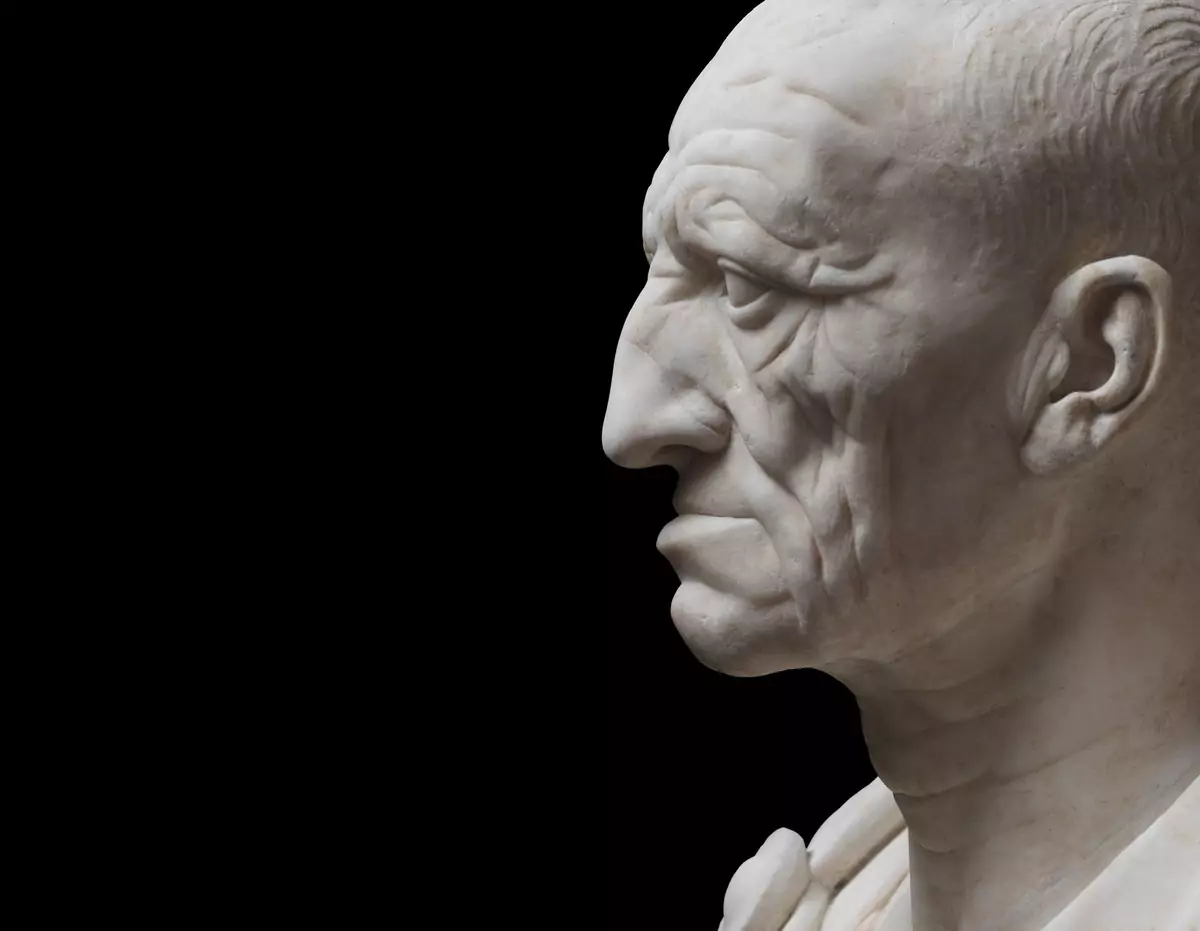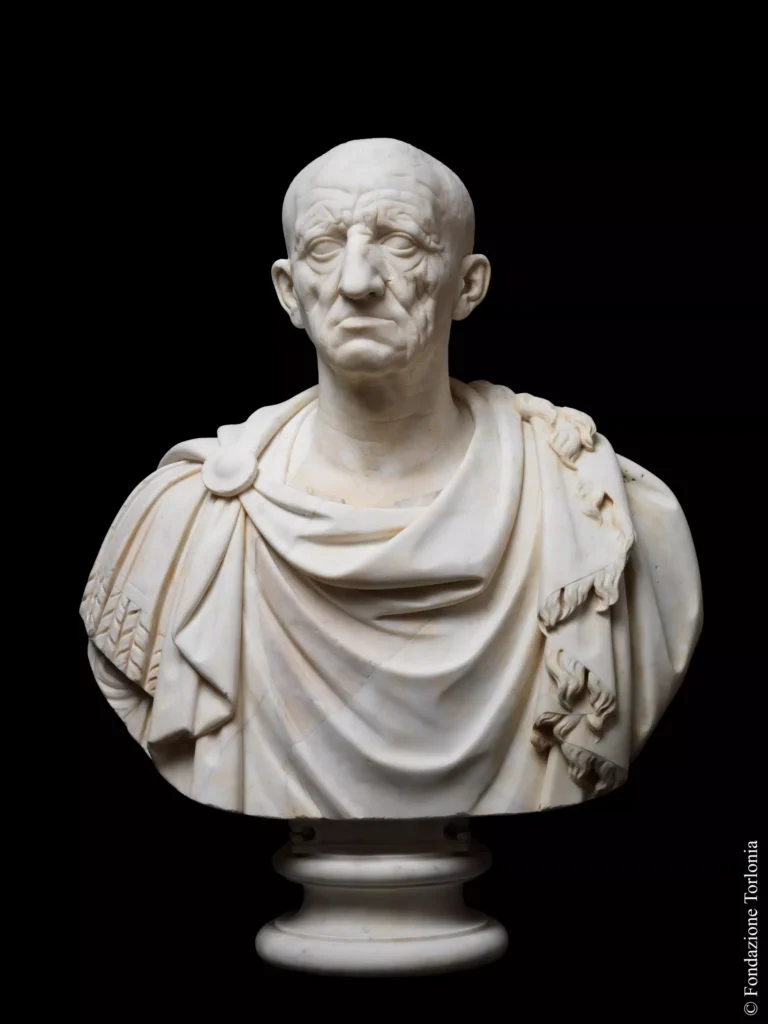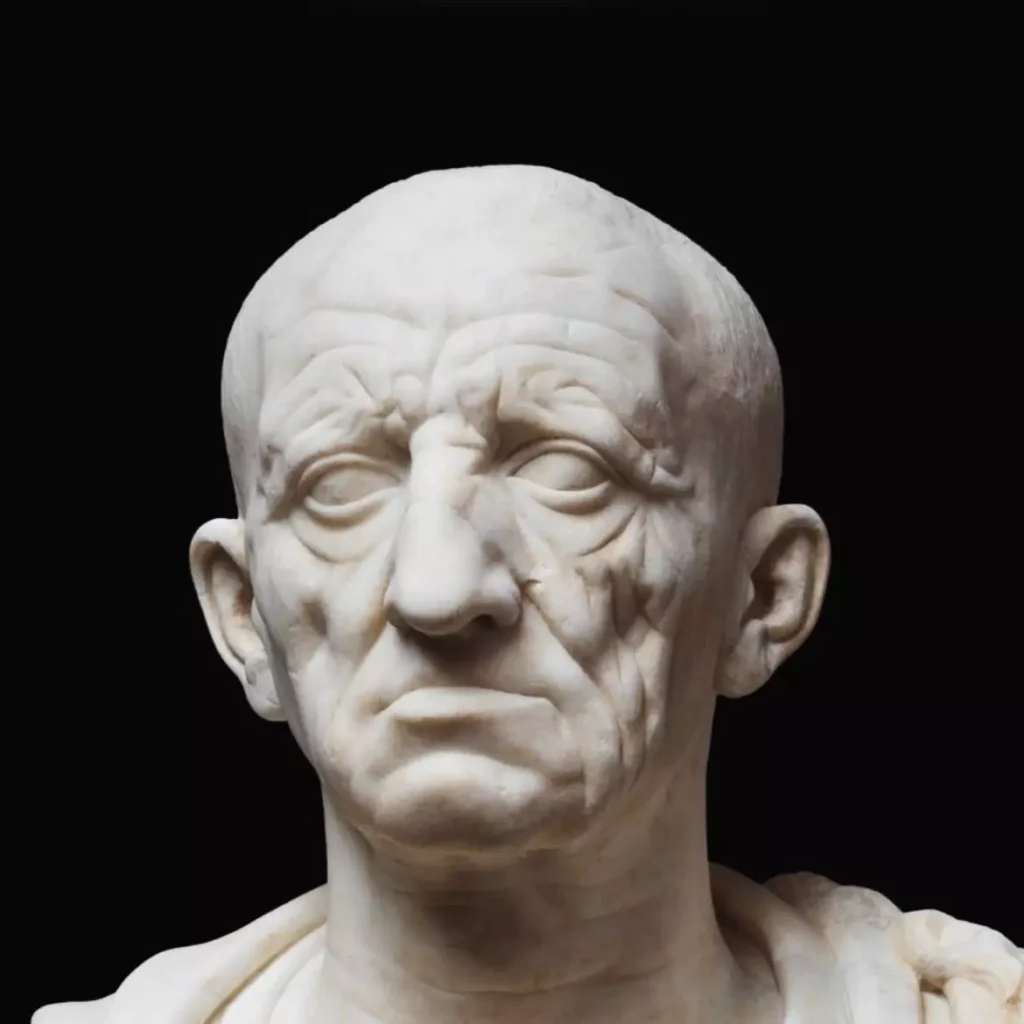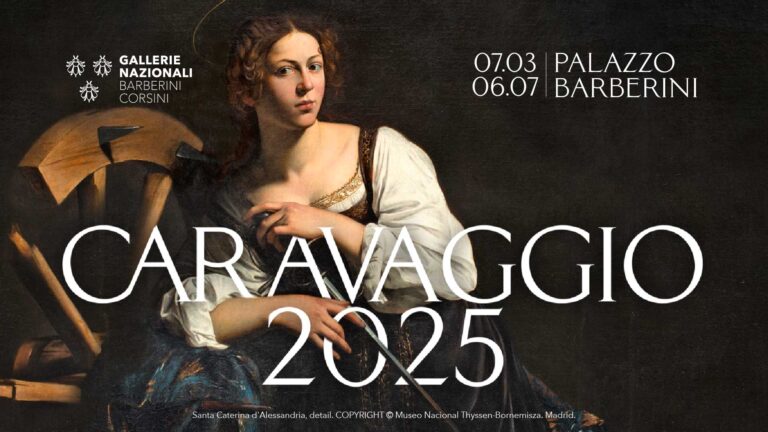Looking for a muse? Check no further. Discover the Best of Art, Culture, History & Beyond!

Material: Marble
Technique: Work sculpted through the use of: chisels (also square-tipped and toothed) rasps
Date: Late Republican period (133–31 B.C.), Collection: Torlonia Museum

Among the numerous imperial busts arranged along the gallery that sumptuously concluded the exhibition itinerary of the Torlonia Museum, this portrait appeared as an effigy of Servius Sulpicius Galba, proclaimed emperor in the summer of 68 and in office only until January 69. Also known as “Vecchio da Otricoli”, from the place of his presumed discovery, the bust portrays an elderly man, presented under the sign of ruthless realism: age is exasperated by marked and deep wrinkles, which characterize the portrait of the face with austere and angular features placed on a modern bust. The realism that animates the portrait could be an expression of the values of the Roman patriciate of the Republican age, dedicated to an austere and traditionalist life, inspired by the exemplary conduct of the ancestors. The portrait in fact recalls the imagines maiorum, “images of the ancestors”, wax masks that were taken from the face of the deceased, enriched with details that made them closer to the truth, and whose use was legally governed by the ius imaginum, a noble privilege.
This marble portrait head (the big bust it’s perched on is post-antique ) found near Otricoli and later entering the famed Torlonia collection is the very finest of its kind.

Republican portraits of its ilk are usually described as ‘veristic’, and their popularity seems to have drawn on their ability to project the virtues of a long life distinguished career. A lot has been written about how they may or may not be rooted in the italic tradition of wax death masks (imagines maiorum) which presumably captured every nook and cranny on the the deceased’s face. It’s a compelling thought.
But looking at really top tier portraits such as this one, it is clear that so much more is at work that an attempt towards accurately depicting life (or death). Artistically it is a tour de force! This gentleman displays the hallmarks of advance age…his teeth aren’t quite there, cheeks sunken, jowls are sagging, hair is long gone, etc. But the patterning of his wrinkled skin, all creases and folds, transcends into a hyper-realism that is pure artistic imagining.
And this conscious invention is what places the “veristic” style in the centuries long and fascinating tradition of ancient self-representation. Values and styles could change (often did and rapidly), but within this trajectory there were no accidents or flippant choices – the details were always meaningful with the messaging’s success down to the sculptor’s skill. And man, did all those forces come together here!

This article is published on ArtAddict Galleria, where we explore the intersections of art, history, and culture. Stay tuned for more insights and discoveries!



